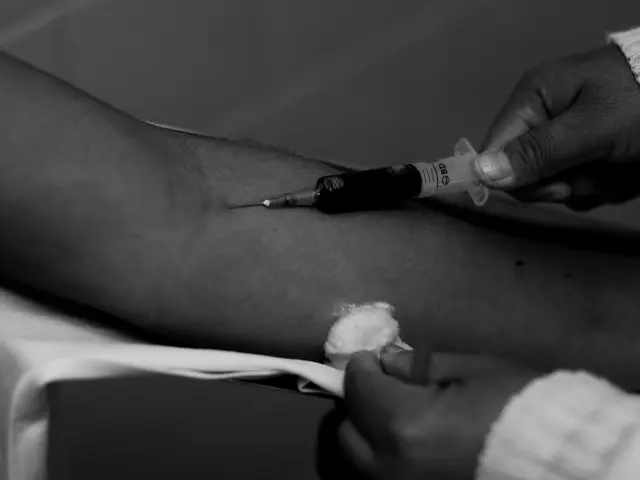Parkinson's Disease Diagnosis Could Be Revolutionized with AI-Powered Writing Pen
Handwriting analysis using AI technology can identify early signs of Parkinson's disease.
Get ready to jot down some revolutionary changes in Parkinson's disease (PD) diagnosis, thanks to a novel tool – an AI-driven writing pen! A groundbreaking study, published in Nature Chemical Engineering, suggests this device could potentially help detect PD early.
Led by researcher Jun Chen from the University of California, Los Angeles, the team developed a unique approach to diagnosing PD using customized pens loaded with magnetic ink and aided by AI. By analyzing variations in handwriting, this pen could provide earlier diagnoses, making a significant impact, especially in regions with limited resources.
The researchers transformed the movements of the magnetic ink into electrical signals, which helped the AI system distinguish the handwriting of PD patients from those without the disease using neural networks. The pen draws on a surface and in mid-air, making it a flexible and unobtrusive solution for diagnostics.
The study argues that this AI-enhanced pen represents a low-cost, accurate, and highly scalable technology, set to revolutionize PD diagnosis. However, to ensure its wide application, future research is necessary to encompass larger patient samples and explore its efficacy in tracking PD progression.
Typically, PD diagnosis relies on the observation of motor skills, a subjective method relying on the clinician's interpretation. This new diagnostic pen offers a consistent, objective, and reproducible tool, reducing the risk of clinical bias.
The Power of AI for Early and Accurate Detection
With over 95% accuracy in recent studies, the AI-driven pen has shown remarkable performance in distinguishing PD patients from healthy individuals. It can even detect minute motor degradation during the early and preclinical stages of PD thanks to its ability to analyze unique handwriting signals, taking account of individual variations in pressure and speed.
Continuous Monitoring for Disease Progression Tracking
The pen's non-invasive nature and ease of use make it well-suited for continuous monitoring at home. This allows for frequent data collection, offering the opportunity for dynamic tracking of disease progression and treatment response. Although further development is required to confirm its full potential, the scalability and consistent accuracy of the pen provide hope for groundbreaking improvements in PD management and personalized therapy.
| Feature | Performance/Advantage ||---------------------------------|------------------------------------------------------------|| Detection accuracy | >95% (up to 96.22% in recent studies) || Early/preclinical detection | Yes || Reduction of clinical bias | Yes || At-home/continuous monitoring | Potential, not yet fully validated || Scalability | High (low-cost, mass-producible materials) |
Embrace the future of PD diagnosis and pave the way for more accurate, objective, and accessible diagnostics with the AI-powered writing pen! For a healthier, brighter future, every stroke matters.
- This AI-powered writing pen, which detects Parkinson's disease (PD), could significantly impact diagnosis, particularly in resource-limited regions.
- The pen's unique approach, using magnetic ink and AI analysis, can identify minute handwriting variations to distinguish PD patients from healthy individuals.
- The AI-enhanced pen offers a consistent, objective, and reproducible diagnostic tool, reducing the risk of clinical bias often associated with subjective motor skill observation.
- With its potential for at-home, continuous monitoring, the pen allows for dynamic tracking of disease progression and treatment response, aiming to revolutionize PD management through personalized therapy.








